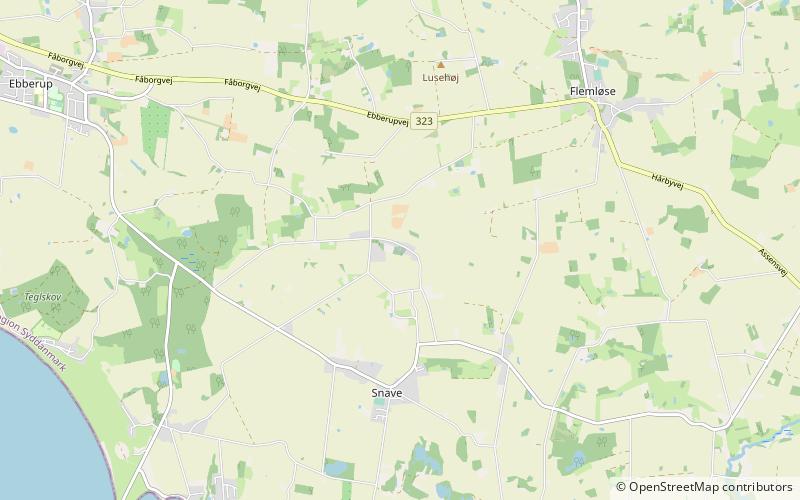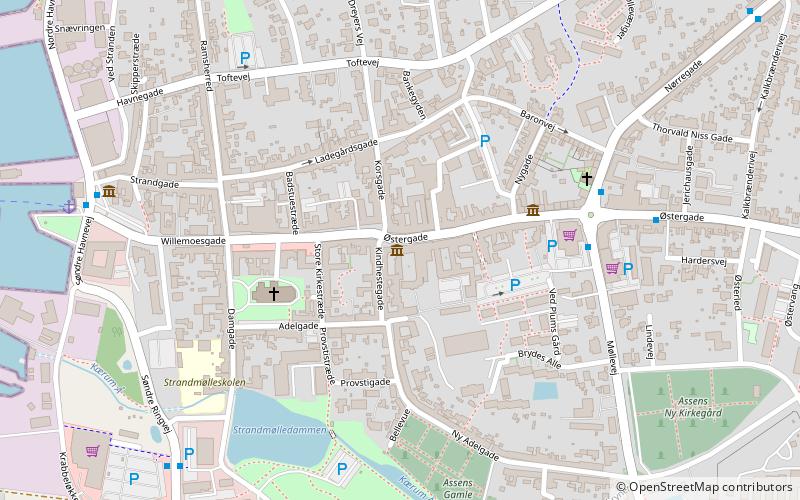Dreslette kirke, Haarby


Facts and practical information
Dreslette Church is located in the village of Dreslette about 10 km SE of Assens. Until the municipal reform in 2007 it was in Haarby Municipality and until the municipal reform in 1970 it was in Båg Herred.
The walls of the nave originate from a Romanesque church built of granite ashlar over a double plinth, Attic profile over a sloping edge. The Romanesque church consisted of apse, choir and nave. The original doors and a window to the south can be traced in the masonry, a tympanum with 3 figures in low relief is inserted in a cemetery portal, it possibly comes from the Romanesque church. In the 14th century the original choir was replaced by the present one. The south chapel was probably built in the 15th century. In the late Gothic period, a tower and a porch were built to the south.
In the second half of the 1700s, Niels Ryberg, a conference councillor, became the owner of the nearby Frederiksgave, to which Dreslette Church belonged. He had the church rebuilt in 1785-87, before the rebuilding he had a painting done showing the church with the late Gothic tower and porch, the painting hangs at Fensmark.
The late Gothic tower and porch were demolished and the present tower built, the tower has three storeys and a platform at the top from which there is an excellent view of the landscape. The north chapel was built as a counterpart to the south chapel. In the cemetery is a memorial to Niels Ryberg's first wife Margareta Dorothea Otte, the memorial was made by Wiedewelt in 1785 and previously stood at Frederiksgave.
The choir vault probably dates from the construction of the new choir in the 14th century, while the nave vault was probably built in the 15th century. The chancel arch has been extended but retains the profiled corbels. During the reconstruction of 1785-87, the church was decorated in the neoclassical style, which has been preserved. The altarpiece is a painting attributed to Canon Peter Brünniche. It depicts Jesus in the Garden of Gethsemane, where he is comforted by an angel of God before his capture. Above the altarpiece is Hartvig Johum Müller's organ, which dates from 1787 and is one of the oldest working organs in the country. It is now only in use on Christmas Eve, when the golden star on the organ façade can be seen rotating as the music plays. Behind the altar there is a presbytery, separated by a panel work. On the organ's façade is the name of Niels Ryberg and the date 1787. The newer organ at the opposite end of the church is located where Niels Ryberg used to have his lodge. The pulpit, baptismal font and stalls date from the rebuilding in 1785-87.
The Romanesque granite bowl is attributed to Horder. During the rebuilding in 1785-87, the Romanesque font was transformed to fit in with the style of the room. The base was replaced by a fluted column, the bowl was painted white and gilded on the raised parts of the relief. This has faded the Romanesque character, but the bowl still asserts itself by virtue of its fine form and workmanship. The bowl has rope lacing on the upper edge and an acanthus frieze on the side. At the bottom is a shaft, which now forms the transition to the column.
Dreslette kirke – popular in the area (distance from the attraction)
Nearby attractions include: Vestfyns Kunstmuseum, Haarby Kirke, Helnæs Mølle, Vestfyns Golfklub.





